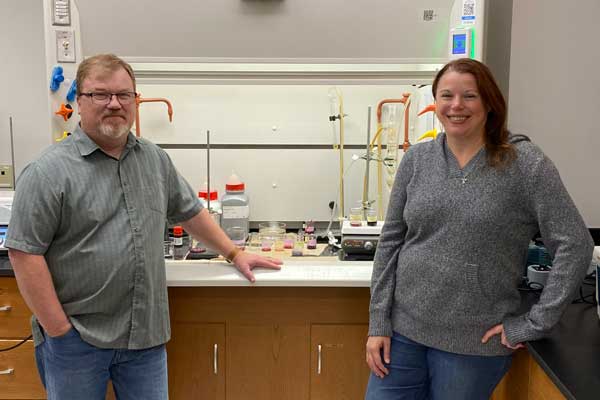The National Institutes of Health has awarded a pair of Ohio researchers over US$451,000 to investigate non-small cell lung cancer detection and treatment.
The University of Dayton, a Catholic academic institution, announced receiving the funding in a news release on Oct. 2.
Chemistry professor Shawn Swavey and engineering department chair Kristen Krupa will be developing fluorescent imaging tools to gain insights about how stress inside cancer cells can be used to detect and potentially eliminate tumours, as described by the school.
“By targeting a part of the cell called the endoplasmic reticulum, the researchers aim to create probes that can monitor cancer cell activity and deliver therapies directly where they may be most effective,” the university explained.
To diagnose and potentially treat NSCLC, the two researchers will be assessing a family of compounds that can be made to function as real-time sensors of cancer cell stress. This could thereby enable precision targeting with chemotherapy drugs while serving as “light-activated agents” that can trigger cancer cell death.
“By designing molecules that can identify and attack cancer cells we hope to create tools that can be adapted for future therapies,” said Swavey.
Krupa is quite pleased to be undertaking this complicated investigation and excited about potentially beneficial findings it may yield. She and Swavey will be joined by four undergrad students who will be paid for assisting them. Their participation will add positively to their resumes post-graduation.
“Of all the research projects I’ve ever been involved in, this is the one I’m most excited about,” Krupa said on social media.
Non-small cell lung cancer currently accounts for more than 85 per cent of global cases. The remainder are attributable to the deadlier small cell lung cancer and variations of the disease with specific mutations.
“The overarching goal of this project is to generate endoplasmic reticulum-targeting fluorescent imaging agents to characterize the role of endoplasmic reticulum stress in NSCLC and develop directed cancer therapeutics based on observed responses,” the project abstract highlighted.
Though innovative as a potential treatment strategy, more simple medtech devices have been developed for lung cancer detection. OneBreath, a breath analysis tool created by Breath Diagnostics, is a standout for its simplicity and efficacious nature.

Swavey and Krupa. Photo credit: University of Dayton
Read more: Breath Diagnostics leaders promote their mission at Miami investment conference
Follow Rowan Dunne on LinkedIn
rowan@mugglehead.com










